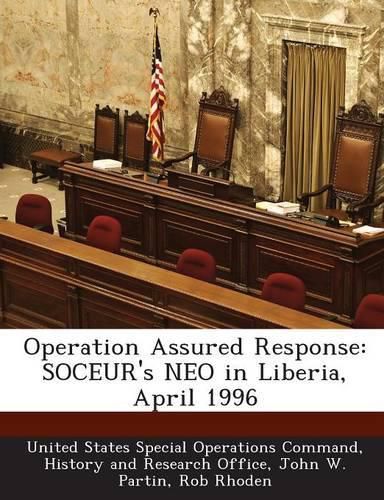Readings Newsletter
Become a Readings Member to make your shopping experience even easier.
Sign in or sign up for free!
You’re not far away from qualifying for FREE standard shipping within Australia
You’ve qualified for FREE standard shipping within Australia
The cart is loading…






\“After years of unrest and fighting, six warring factions in Liberia agreed to a cease fire and a peace accord in August 1995. Leaders of the six factions joined together and formed the council of state. The cease fire lasted only a short time, however. The Armed Forces of Liberia and the Liberian Peace Council forces had disintegrated into rogue elements influenced by one of the two major warring factions: the National Patriotic Front of Liberia (NPFL) led by Charles Taylor, or the various ethnic Krahn factions, including the supporters of Roosevelt Johnson. By early April 1996, the fighting had spread to Monrovia, and the Economic Community of West African States Cease-Fire Monitoring Group (ECOMOG) and United Nations Observers had no success in restoring the peace. Marauding bands of looters, and the indiscriminate firing of small arms, rocket propelled grenades (RPGs), mortars, and artillery returned Monrovia to a \"fierce new state of lawlessness\” according to the New York Times. The country of Liberia was simply in a state of anarchy, endangering both U.S. and foreign nationals.\“ Topics discussed include initial preparations, planning, deploying JTF Assured Response, establishing the ISB at Freetown, securing the U.S. Embassy in Monrovia, the evacuation process, the flying mission, and the transition.
$9.00 standard shipping within Australia
FREE standard shipping within Australia for orders over $100.00
Express & International shipping calculated at checkout
\“After years of unrest and fighting, six warring factions in Liberia agreed to a cease fire and a peace accord in August 1995. Leaders of the six factions joined together and formed the council of state. The cease fire lasted only a short time, however. The Armed Forces of Liberia and the Liberian Peace Council forces had disintegrated into rogue elements influenced by one of the two major warring factions: the National Patriotic Front of Liberia (NPFL) led by Charles Taylor, or the various ethnic Krahn factions, including the supporters of Roosevelt Johnson. By early April 1996, the fighting had spread to Monrovia, and the Economic Community of West African States Cease-Fire Monitoring Group (ECOMOG) and United Nations Observers had no success in restoring the peace. Marauding bands of looters, and the indiscriminate firing of small arms, rocket propelled grenades (RPGs), mortars, and artillery returned Monrovia to a \"fierce new state of lawlessness\” according to the New York Times. The country of Liberia was simply in a state of anarchy, endangering both U.S. and foreign nationals.\“ Topics discussed include initial preparations, planning, deploying JTF Assured Response, establishing the ISB at Freetown, securing the U.S. Embassy in Monrovia, the evacuation process, the flying mission, and the transition.